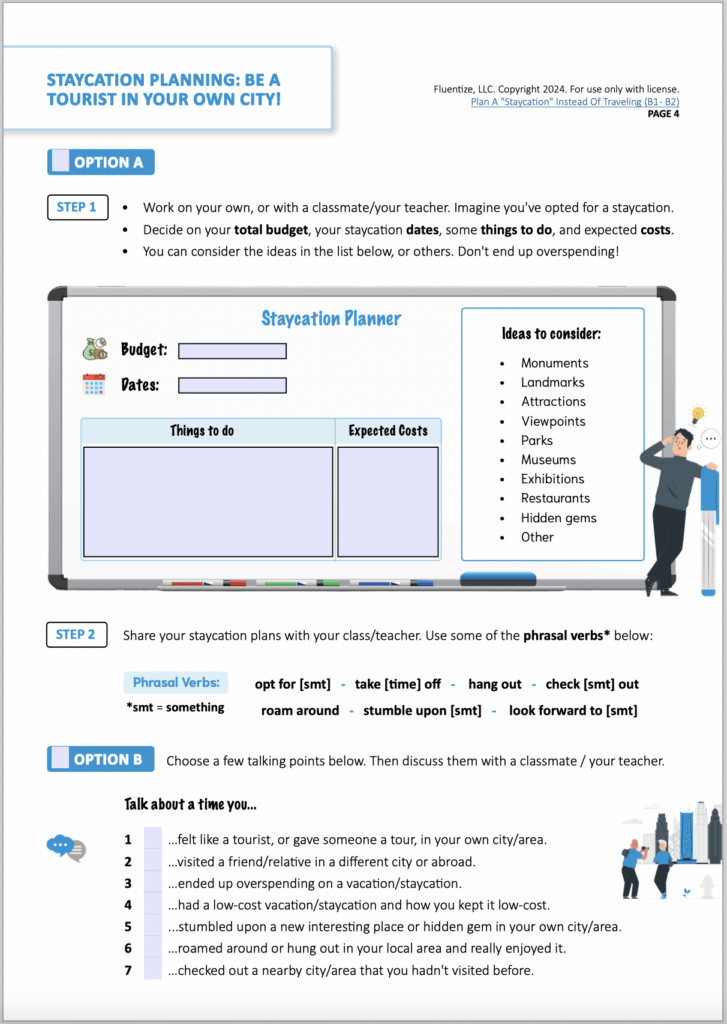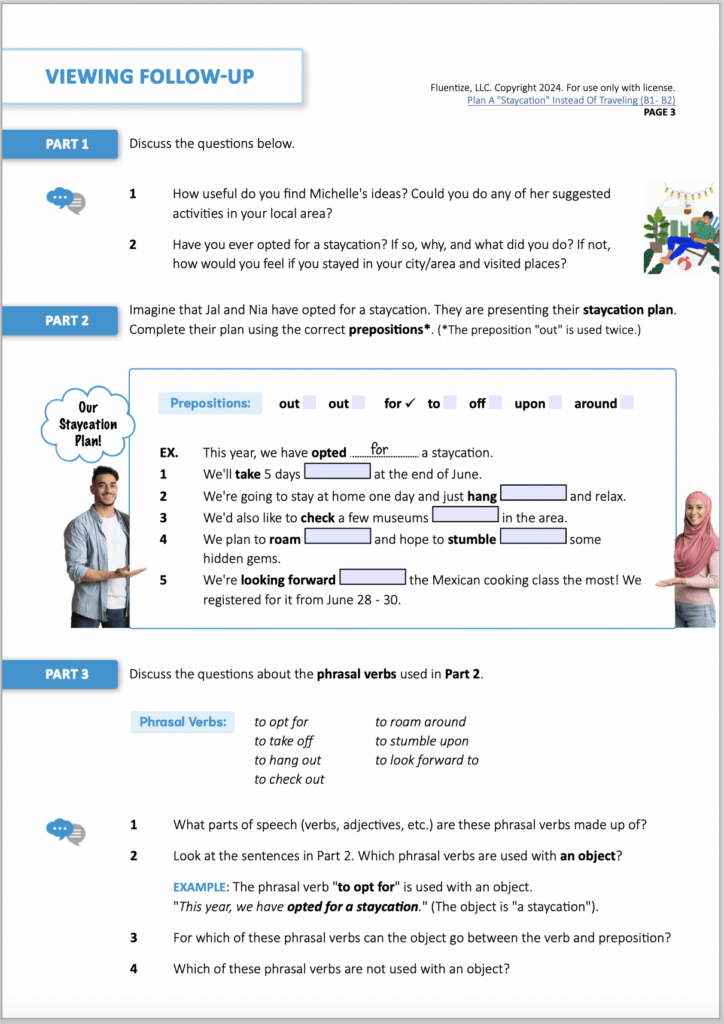Fluentize is an innovative platform that enhances English language learning by centering its lessons around real-world videos. Their formula integrates authentic video content from various sources like news, interviews, and popular media, making learning both practical and enjoyable. Each lesson is carefully designed to reflect everyday contexts, helping learners improve their language skills through relevant, real-life situations.
What relevance do real-world videos have for English language learners?
Real-world videos are highly relevant for English language learners as they expose students to natural language use, including everyday vocabulary, expressions, and conversational dynamics. Authentic videos help bridge the gap between textbook learning and actual language use in various real-life contexts, making lessons more engaging and applicable.
Real-world or authentic videos refer to unmodified, naturally occurring video content produced for native speakers, rather than for language learners. These videos capture genuine interactions, accents, and speech patterns, offering learners a more realistic understanding of how English is used in different situations.
Examples of such videos include:
-
News clips: Current events presented in real-time English.
-
Interviews: Conversations with public figures, experts, or everyday people.
-
Vlogs: Personal accounts and stories from creators, often informal and spontaneous.
-
Short films: Narratives that provide both dialogue and cultural context.
By using this kind of content, Fluentize equips learners with the skills to understand and communicate in real-world settings, enhancing their listening comprehension and overall fluency.
What are the benefits of integrating real-world videos in the ESL classroom?
Improved understanding of vocabulary
Through real-world videos, learners are exposed to vocabulary and phrases in meaningful contexts, making it easier to understand the nuances of language use and remember new words and expressions.
Learners are not only introduced to words but to natural speech patterns, real accents, slang, and colloquialisms, helping them become familiar with how English is actually spoken in daily life.
Cultural exposure
Real-world videos often provide insights into the culture, behaviors, and norms of English-speaking communities, helping students understand the context behind language use.
Exposure to a variety of accents and dialects
Authentic resources provide exposure to native speakers with different accents and dialects using the language in practical situations. This is particularly helpful in Business English, as learners will likely work with people around the world who speak English in very different ways.
Skills Development
Real-world videos often present relevant, thought-provoking topics, encouraging students to analyze content, form opinions, and engage in discussions, fostering critical thinking. For example, Fluentize’s videos challenge students to improve their listening skills as they have to navigate different accents, speeds, and contexts. Finally, authentic videos, like news clips, vlogs, and short films, are more relatable and interesting for students, keeping them engaged and motivated to learn.

How can real-world videos improve student engagement and motivation?
Videos combine both visual and auditory elements, which can make lessons more engaging compared to traditional text-based learning. The combination of imagery, motion, and sound makes the content come alive, helping students stay focused. Videos can also demonstrate concepts that are difficult to explain through words alone.
For example, Fluentize’s online lessons are specifically designed for online learning environments, offering interactive and creative activities that cater to the needs of ESL students. Here’s how they are structured to maximize engagement and learning:
1. Video-Based Content
Fluentize centers its lessons around real-world video content, providing an authentic language-learning experience. The videos are chosen to reflect everyday situations, popular topics, and current events, making the lessons both practical and relevant. These video-based lessons are highly visual and engaging, which is ideal for keeping online learners focused.
2. Interactive Activities
Fluentize’s lessons are filled with interactive tasks that encourage active participation rather than passive learning. Some common interactive activities include:
-
Fill-in-the-blank exercises: Students can complete sentences based on video content, helping reinforce new vocabulary and grammar.
-
Matching games: Students match words or phrases with their meanings or contexts, encouraging vocabulary retention.
-
Multiple-choice quizzes: Quizzes test comprehension and allow immediate feedback in a low-pressure format.
-
Listening comprehension: Focused exercises based on the audio from videos help sharpen listening skills.
These activities are designed to make learning feel like a game, promoting engagement and motivation in an online learning setting.

3. Creative and Communicative Tasks
Fluentize includes creative tasks that help students practice their language skills in more open-ended, communicative ways. These tasks might involve:
-
Role-playing: Students practice conversations based on scenarios from the video, promoting real-life application of language skills.
-
Story creation: Learners might write or verbally create stories based on the content of the video, encouraging creativity and deeper language use.
-
Debates or opinion sharing: Discussions about the themes in the videos help students practice expressing their views and opinions in English.
These activities are great for group lessons or online forums where students can interact and collaborate with each other, even in virtual settings.
4. Discussion Questions
To foster communication and deeper understanding, Fluentize integrates a series of discussion questions into its lessons. These questions encourage students to think critically about the video content and its broader themes. The questions often cover:
-
Personal opinions and reflections: Encourage students to relate the content to their own experiences and ideas.
-
Prediction and inference: Ask students to guess what happens next or infer meaning from context, which sharpens critical thinking.
-
Cultural comparisons: Provide opportunities for students to compare what they see in the video to their own cultural contexts, which can stimulate rich discussions and deeper engagement.

5. Designed for Online Platforms
Fluentize’s lessons are optimized for digital delivery. The materials are easy to share on online platforms like Zoom, Google Meet, or learning management systems (LMS), allowing teachers to seamlessly integrate them into virtual classrooms. Additionally, the digital nature of the activities means they can be completed interactively, even when students and teachers are in separate locations.
6. Levels and Customization
The lessons are categorized by level, from beginner to advanced, making it easier for teachers to tailor content to the specific needs of their students. Each lesson includes suggestions for how to adjust activities depending on the proficiency of the class, offering flexibility in lesson planning.

7. Focus on Real-World English
Fluentize’s lessons emphasize real-world English, using authentic videos and topics likely to interest and relate to learners’ lives. This focus on practical, everyday English helps students feel more prepared to use the language in real settings, increasing their confidence and motivation.
By combining video-based content with interactive and creative activities, Fluentize makes online ESL lessons engaging, communicative, and adaptable to various teaching environments. The discussion questions and task-based learning elements further enhance students’ language acquisition by promoting active participation and deeper learning.
This combination of measurable tasks and communicative exercises helps teachers monitor both linguistic competence and broader language skills development over time.
Incorporating real-world videos into ESL classes offers numerous benefits, enhancing both engagement and learning outcomes. Videos provide authentic language exposure, improve listening skills, and introduce cultural nuances that deepen students’ understanding of English in context. The dynamic, multimodal nature of videos caters to diverse learning styles, making lessons more interactive and relatable. Fluentize’s video-based lessons create a richer, more effective language-learning experience for ESL students by fostering motivation and providing practical, real-life scenarios.










